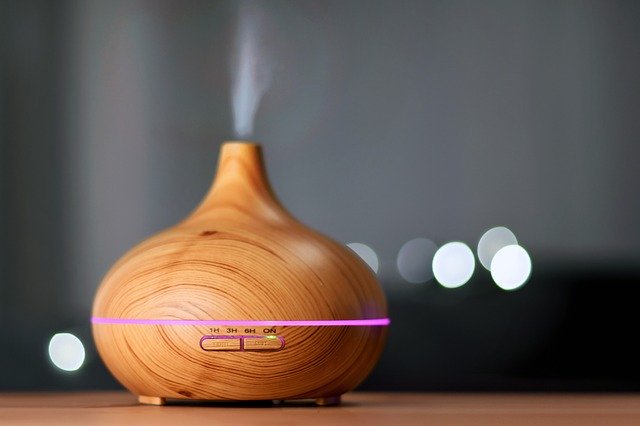Humidifiers can also grow mold. What causes mold in humidifiers? How to remove? A humidifier that is useful for dry air such as in winter. In order to continue using it cleanly, daily care is essential. We will also introduce tips for daily care of the humidifier, which also prevents mold.
Introduction
Many people find humidifiers useful when the air in a room is dry and their skin and throat are not feeling well. Is it safe to handle the humidifier? Improper use or carelessness after use can cause mold to grow. If mold occurs, it is necessary to thoroughly remove it because it is a concern for health. Daily care of the humidifier is important before it is bothered by mold.
Conditions for mold growth
- The temperature is 0 to 35 degrees (breeding is active at 20 to 30 degrees)
- Humidity 60% or more (breeding becomes active from 80% or more)
- Locations where air (oxygen), moisture, or dust accumulates
Housing where people live has all the conditions for mold to grow. Mold is particularly prone to breeding around water such as bathrooms, toilets, and kitchens. In addition, mold can grow in areas that are not normally cleaned. Examples include condensation on windows, closets packed with clothes and luggage, and inside air conditioner filters and humidifiers.
Damage caused by mold
There is a risk of health hazards caused by mold invading the body.
- Infection
- Addiction
- allergy
- sick house syndrome
Mold that enters the body multiplies and impairs the respiratory system. Mainly pneumonia, rhinitis, exacerbation of asthma, etc. Sick house syndrome refers to symptoms such as hives, eczema, dizziness and nausea caused by air pollution caused by mold. Since mold spores linger in the air, they pose a threat enough to enter the human body.
Read Also: Can dust mites be sucked up with a vacuum cleaner?
Humidifier mold is also dangerous “humidifier disease”
The mold inside the humidifier scatters into the air along with the steam. This is called “humidifier disease” when the scattered bacteria enter the human body and cause an allergic reaction. Symptoms are similar to those of the common cold, with cough, fever, long-term fatigue and, in some cases, pneumonia. Humidifier disease is medically called hypersensitivity pneumonitis, and it is a symptom that has become common in modern times when humidifiers have become popular.
What causes mold in humidifiers?
The main cause is the continued use of humidifiers in unsanitary conditions. Next, I will explain in detail the causes of mold in the humidifier.
Causes of mold in humidifiers
As there is a humidifier disease, mold also occurs from humidifiers. The cause is the environment and using the humidifier while it is dirty. Using humidifiers infested with mold has adverse health effects. Let’s know the cause of mold in order to use the humidifier safely.
Cause ① Indoor temperature
Mold grows easily in environments where the temperature is between 20 and 30 degrees Celsius and the humidity is 80% or higher. This is especially true in air-conditioned rooms in winter. With the windows closed, air conditioners and humidifiers tend to be set too strong, but this is a favorable condition for mold. Adequate ventilation and not setting air conditioners and humidifiers too high will help prevent mold.
Condensed windows in the winter can also cause mold. Wipe off any water droplets on the windows.
Cause ② Dirt inside the humidifier
When using a humidifier, dirt accumulates on the filter. In addition, after use, water droplets adhere to parts other than the tank inside the humidifier, and leaving the remaining water droplets may cause limescale. Dirt on the parts, limescale, etc. make it easier for mold to occur. Depending on the type of humidifier, some have a shape that allows dust to easily enter from the outlet, so be careful.
Cause ③ The water is not changed
Not changing the water in the water tank of the humidifier can also lead to mold growth. Only when I’m at home at night, such as before and after going to bed, I don’t run the humidifier for a little more than an hour, so there are surprisingly many cases where the water stays the same. The water in the tank easily accumulates bacteria and deteriorates. It is dangerous to keep using the same water because it is troublesome to replace it every time.
Are ultrasonic humidifiers susceptible to mold?
- Ultrasonic humidifier: A humidifier that uses ultrasonic vibrations to repel water and release water droplets in the form of a mist.
Humidifiers come in steam, evaporative, hybrid, and ultrasonic types, but the ultrasonic type is particularly susceptible to mold. For example, the steam type that releases steam adds heat to the water, so bacteria can be suppressed. On the contrary, the ultrasonic type only vibrates the water, so if the water is dirty or bacteria are accumulated, the risk of mold is high.
Recently, there are ultrasonic humidifiers that come with an antibacterial cartridge that purifies the water.
What should I do if mold grows in my humidifier?
If you use something that has mold attached to the humidifier, you can clean it off.
